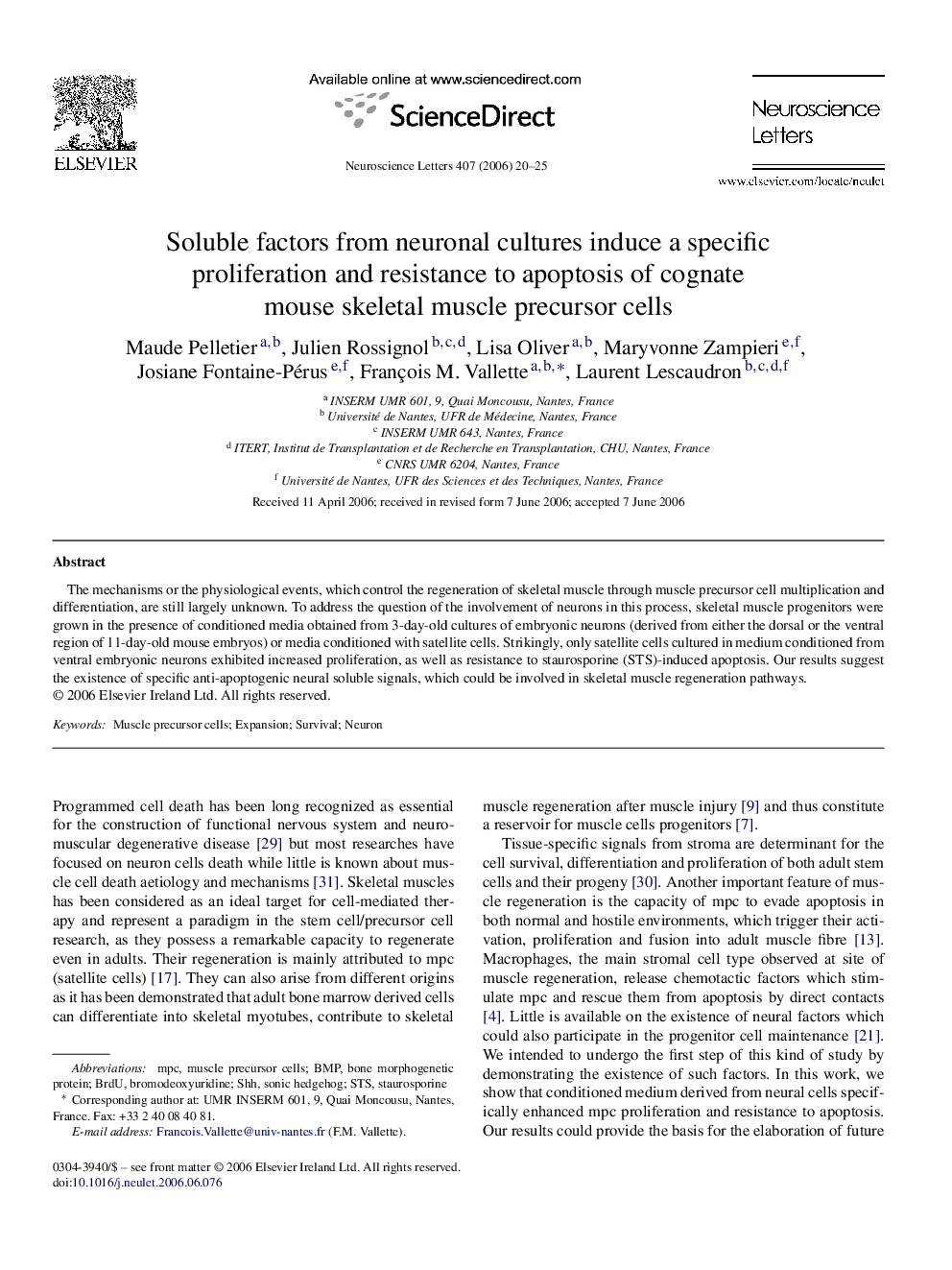| Article ID | Journal | Published Year | Pages | File Type |
|---|---|---|---|---|
| 4350227 | Neuroscience Letters | 2006 | 6 Pages |
The mechanisms or the physiological events, which control the regeneration of skeletal muscle through muscle precursor cell multiplication and differentiation, are still largely unknown. To address the question of the involvement of neurons in this process, skeletal muscle progenitors were grown in the presence of conditioned media obtained from 3-day-old cultures of embryonic neurons (derived from either the dorsal or the ventral region of 11-day-old mouse embryos) or media conditioned with satellite cells. Strikingly, only satellite cells cultured in medium conditioned from ventral embryonic neurons exhibited increased proliferation, as well as resistance to staurosporine (STS)-induced apoptosis. Our results suggest the existence of specific anti-apoptogenic neural soluble signals, which could be involved in skeletal muscle regeneration pathways.
